AI-powered Innovation
Architect of many revenue-generating
deep-tech/AI platforms, products & enterprise transformations…
See Portfolio for list of our recent or notable projects.
About our CEO, Paul Golding
Originally from the UK, our principal, Paul Golding, is a winner of the prestigious IEE prize with over 30 patents in a wide array of advanced technologies including AI, AI Safety, Signal Processing, Computer Vision, Computational Aesthetics, Blockchain, Digital Marketing and Analytics.
He has a somewhat unique philosophy about work, which you can read more about here.
He has spanned roles from highly-technical individual contributor and inventor to running global innovation teams that have driven major digital transformation programs for giants such as Telefonica and O2 UK.
Paul has built dozens of real AI systems used in commercial applications with his first patent in 1996 during the so-called “AI Winter”. He understands the huge gap between AI-in-theory and AI-in-practice applied to revenue-impacting problems.
He has built and run six R&D “innovation labs” (“start-ups” within an org) providing both product and technical vision with hands-on involvement in actively inventing proprietary techniques and new product categories.
In 2011, he moved to Silicon Valley after being awarded a rare self-sponsored “Genius Visa”.
He designed his first commercial product (X.21 fibre-optic multiplexor) whilst still at university (aged 18) for which he was awarded the international Von Rheinhold Nostrand innovation prize and the prestigious IEE prize, rarely given to undergrads.
At only 24, he won the coveted Motorola global engineer of the year for a novel parallel processor design that enabled radical scaling of cellular networks: a method since used in trillions of GSM calls.
He went on to become one of the inventors of the mobile app and wrote several leading text books in the field for Wiley Publishing. He built the world’s first text messaging gateway (for Lucent Technologies) and the world’s first mobile portal for Netscape.
He pioneered various machine learning and AI techniques in digital cellular, which earned patents related to co-processor architecture and computational acceleration. This created a new business line for Motorola worth hundreds of millions of dollars.
For McLaren Racing (Formula One) he pioneered one of the first stream-processing real-time analytics engines that became a flagship product for the McLaren Applied Technologies division.
For O2, he led the creation of their start-up incubator and innovation lab. In addition to launching a brand new business line in telecoms platforms, he designed a novel programming language (connFu) for coding telco apps that cut development time by 10x. Start-ups were incentivized to build solutions atop of the platform as part of a more strategic innovation plan.
Paul has held interim Chief Scientist, Chief Architect and CTO roles at a number of leading orgs across multiple continents, often working alongside a high-performing sales team (he is fully trained in SPIN selling).
He has given many keynotes at prestigious corporate and public events, often invited as a “futurist”.
Outside of work, him and his wife homeschooled three kids by following a “renaissance” style eclectic education program with an emphasis upon creativity. His kids were the first non-US students to attend the pioneering experimental EPGY high school at Stanford funded by the National Science Foundation (NSF).
He is a keen advocate of “augmented creativity” using AI to magnify human cognition and has designed many solutions within this rubric.
He is an active orchestral composer, carpenter and trail runner and is studying watch-making techniques with an aim to become a horologist and be one of the few to make his own tourbillion.
Connect with Paul on Linkedin.
Key Credentials
IEE Prize
Winner of the IEE prize for outstanding achievement in Electronic Engineering (UK) including making a commercially licensed (an X.21 Fiber-Optic Multiplexor) as an undergrad.
>30 patents in advanced technologies (1992-2021)
Including in AI, blockchain, computer vision, signal processing for cellular, computational aesthetics, attention-based bots, digital art, digital marketing, analytics and more.
One of the Earliest Patents in Applied Neural Networks (Comms)
During the so-called “AI winter”, Paul filed patents for a ’94 invention: “Multi-layer Perceptron Neural Network Adaptive Equaliser” which was one of the earliest NN patents for a commercial use of AI in the field of mobile communications.
Pioneer in Generative AI
For leading online art e-commerce provider (art.com) Paul built one of the first commercially deployed AI language models to automatically generate art descriptions based upon aesthetic signatures discovered using machine learning. It also used an AI model for perceptual color understanding.
Early application of AI/ML to 3D Image Processing
From 1992-1996, Paul lead research for a massive EU-funded collaborative academia-industry research at Motorola R&D whilst contributing part-time for a PhD. The work pioneered the use of AI to solve 3D compression (mesh decimation) for mobile augmented reality applications.
World-beating financial OCR performance (Computer Vision)
For Prosper Inc, a fintech company in SF, Paul developed computer vision techniques to read financial docs at any angle and with varying amounts of background noise, exceeding the capabilities of the leading finance OCR vendor (Lead Tools) and beating Google Vision. This led to several patent applications.
Motorola Patent of the Year (Youngest ever recipient, Age 24)
For designing a chipset radio that revolutionized the compactness of cellular basestations (for microcells) and launched a new family of DSP devices for Motorola semiconductor, Paul received the Motorola global patent/engineer award.
Architect of a Data Fabric "Digital Twin" technology capable of Massively Scalable Simulation of the Enterprise
For a UC-Berkeley incubated start-up, Paul architected and built a serverless backend using the ECS pattern from Massive Multiplayer Online Gaming (MMOG) that allowed composable objects to take on any number of properties. This goals was to power “omniscient” knowledge-management systems like the magical one seen in Minority Report, capable of scaling to every business object in an enterprise.
Von Rheinhold Nostrand (Publisher) Prize
Winner for “outstanding academic achievement” in designing a commercially adopted product (X.21 fiber-optic MUX) as an undergrad, aged 18.
Invited "Futurist" at Many Leading Orgs
Paul has presented “futurist” or technology insights talks to the likes of McLaren Racing, O2 UK, Naspers, Ericsson, AT&T, Vodafone, GSMA, 3 UK, Navteq (Nokia), British Museum and many more.
Large-scale Stream Processing "Math" Engine
In 2010, for McLaren Racing (of Formula One fame), Paul architected one of the world’s first real-time stream-processing engines that was intended for large-scale performance engineering IoT solutions as a spin-out (McLaren Applied Technologies), as used by Nike, Specialized and other leading performance brands.
Founder of Europe's First Mobile Apps Co.
Paul founded Magic E Company in 1996. He pioneered many industry firsts:
- First SMS gateway web API
- First Microsoft Exchange wireless connector with full OTA capabilities, sold to Glenayre Paging in North America.
- First location-based service in Asia (MetroWalker HK and NTT DoCoMo Japan)
Author of First Major Textbook for Mobile Apps
Published by Wiley Academic Press in 2004 – one of the first text books explaining mobile apps and related cellular technologies.
Expert Member of Java Mobile Apps JSR
Paul was one of only three individual expert members of the Java Community Process team that developed the original mobile apps framework called MIDP.
Inventor of connFu scripting language
connFu was a pioneering platform and programming language (Ruby DSL) for building telephony services atop of any carrier network
Designer of the World's First GSM baseband chipset
Paul was lead engineer for the Enhanced Filter Co-Processor (EFCOP) that enabled the world’s first DSP chip for GSM basestations. This work produced over 10 keystone patents for Motorola in the GSM market.
Featured Podcasts
For a more peek into my career, life and activities, the following recent podcasts might prove useful (I hope).
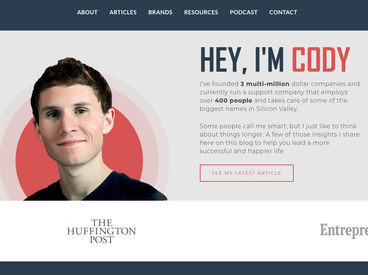
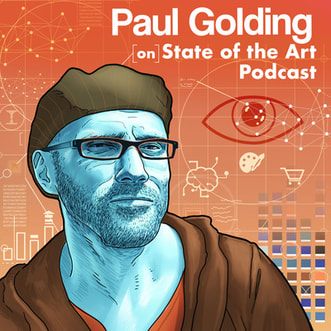
The Art of Quantifying Aesthetic Judgement:
This was a podcast with the excellent “State of the Art” podcast series and stemmed from my long stint in art-related technologies across a wide range of applications from e-commerce to computer vision (to understand what we see in art). It sheds some light on the science of viewing art, but also diverges into the general themes of technology, AI and creativity.
Blockchain (With Stephen Shapiro)
Stephen Shapiro is considered one of the leading innovation consultants whose client list is longer than this website. We first met when i invited him to run an “Innovation Poker” session at the first ever O2 UK innovation day (a huge offsite bash). We kept in touch and when Stephen heard about the work I was doing in Blockchain he invited me onto his podcast to explain blockchain and its use cases (to a business audience).
Featured Publications
I have written numerous books, essays, guest chapters and papers. Here are just a few notable examples.

From Writing books to Writing Repos: Elasticsearch
I stopped writing technical books after the vastness of self-teaching materials on the web became apparent. I doubt that I have much more to add to the corpus, although I recently re-wrote the Guide to Elasticsearch using Python examples instead of RESTful ones and published it as a Github repo. Please feel free to use, abuse and extend. Pull requests welcome (as I only covered about 60% of the API).
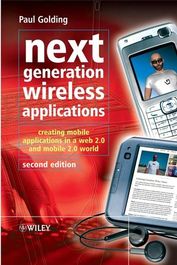
Next Generation Wireless Applications
My earlier books (“Next Generation Wireless Applications” editions 1 and 2) were written to fill a gap at the time, plus I used to teach mobile apps techniques and technologies so often that I needed a kind of “manual” to hand out. It was just about possible to navigate the entire scope of mobile apps within a single 600-page book back then. Note that the used of the term “next generation” was before anyone even knew there was such a concept as wireless applications, but I had already built many apps by then (see “my work”) and had previously done a lot of academic research into mobile comms methods where the term “next generation” was already in vogue (for what we eventually called “wireless data” versus voice).
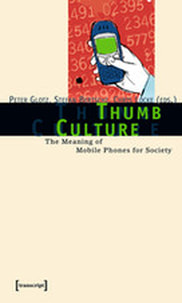
Thumb Culture
I also wrote the final chapter about the future of mobile in the “Thumb Culture” compendium, in which I predicted the rise of mixed-reality devices (fairly easy to predict) and documented a Google-glass-esque use case. (As a side note, I ended up being interviewed by Sergey Brin to run a next-gen Google Glass research, but they canned the project.)
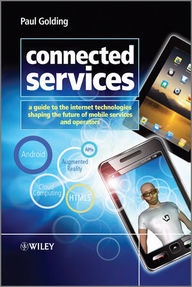
Connected Services
During an amazing few years trying to reinvent the carrier industry via a well-intentioned investment from O2 UK and Telefonica (see my work) I found myself having to explain the concept of platform business models and modern Web economics, like the API economy. The then-CEO of O2 (now at Verizon) had coined a term Connected Services about the future of carriers, but no one seemed to know what it really meant. Rather cheekily, I wrote a book to describe the application of modern web/platform techniques to carriers and called it “Connected Services” in an attempt to offer a comprehensive and meaningful definition.